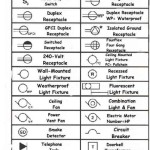How to Get Rid of Tiny Flies in Houseplants
Tiny flies buzzing around your houseplants can be a frustrating and unsightly problem. These pesky insects, often referred to as fungus gnats, are attracted to the moist soil and decaying organic matter that often accumulate in potted plants. While they may not pose a significant threat to your plants, they can be a nuisance and may even cause damage if their population grows unchecked. This article will provide a comprehensive guide on how to effectively eliminate these small flies from your houseplants.
Identify the Culprit: Fungus Gnats
Before embarking on any pest control measures, it is essential to confirm that you are dealing with fungus gnats. These small, dark flies, typically less than 1/8 inch long, are easily recognized by their long legs and distinctive "dancing" flight pattern. They are attracted to damp soil and decaying organic matter, often laying their eggs in the potting mix. Larvae, which resemble small, white worms, feed on the roots of plants, potentially causing damage.
To identify fungus gnats, try the following:
- Observe the flies closely. Do they have long legs and a "dancing" flight pattern?
- Look for small, white worms in the soil around your plants.
- Gently tap the soil around the base of your plant. If you see tiny flies emerge, you have fungus gnats.
Preventative Measures: Maintaining a Healthy Environment
Prevention is often the most effective way to control fungus gnats. By creating a less favorable environment for these pests, you can significantly reduce their chances of infesting your plants. The following steps are crucial for preventative care:
-
Avoid Overwatering:
Fungus gnats thrive in moist environments, so it is essential to avoid overwatering your plants. Water only when the top inch of soil is dry. -
Allow Drainage:
Ensure your pots have drainage holes to prevent water from sitting in the soil. -
Use Well-Draining Potting Mix:
Choose a potting mix that is specifically designed for indoor plants, as these mixes are often formulated to drain well. -
Clean Up Debris:
Remove any dead leaves or other organic matter from the surface of the soil and surrounding areas. -
Limit Fertilizer:
Over-fertilizing can create a more attractive breeding ground for fungus gnats. Feed your plants sparingly, using a balanced fertilizer formulated for houseplants.
Eradication Strategies: Targeting the Flies and Their Larvae
If you have already detected fungus gnats in your houseplants, it's time to implement eradication strategies. Combining different methods can generally offer the most effective results. Here are some proven techniques to eliminate these pesky insects:
-
Yellow Sticky Traps:
These affordable traps attract and capture fungus gnats, helping to reduce their population over time. Simply place the trap near your infested plants. -
Neem Oil:
Neem oil is a natural insecticide derived from the neem tree. Dilute it with water and apply it to the soil and leaves of your plants to kill both adult flies and larvae. -
Diatomaceous Earth:
This organic, non-toxic powder is made from fossilized diatoms and creates sharp edges that dehydrate and kill insects when they come into contact with it. Sprinkle a thin layer of diatomaceous earth around the base of your plants. -
Mosquito Dunks:
These small, donut-shaped devices contain a bacterium that kills mosquito larvae. Place one in the water in your plant saucers or trays to eliminate larvae and prevent further infestations. -
Repotting:
If the infestation is severe, you may need to repot your plants in fresh potting mix. Be sure to remove all old soil and clean the pot thoroughly before adding fresh soil. -
Hydrogen Peroxide:
Hydrogen peroxide is a mild disinfectant that can help to kill fungus gnats and their larvae. Dilute a small amount of hydrogen peroxide with water (approximately 1/2 cup of hydrogen peroxide per gallon of water) and pour it into the soil of your infested plants.
Remember, patience is key. It may take several weeks to completely eliminate a fungus gnat infestation. Continue to monitor your plants and maintain proper care practices to prevent future infestations.

How To Get Rid Of Gnats In Houseplants Treatment Prevention

How To Get Rid Of Fruit Flies Fungus Gnats In Plants

How To Get Rid Of Gnats In Houseplants

How To Deal With Fungus Gnats On Houseplants Heeman S

How To Deal With Fungus Gnats On Houseplants Plant Perfect

12 Ways To Get Rid Of Gnats In Your Home And Garden

Getting Rid Of Fungus Gnats In Houseplants Mosquitonix

The Origin History Of Tree Ted Lare Design Build
How To Get Rid Of Fungus Gnats On Indoor Plants Abc Everyday

How To Get Rid Of Bugs On Indoor Plants For Good Busy Gardening
Related Posts








